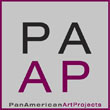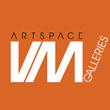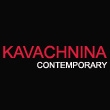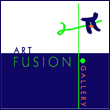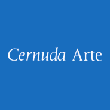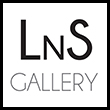« Features
ASK THE ART LAWYER. Can I Come, Can I Stay, Can I Work, and for How Long?
By Octavio Robles, AIA, Esq.
Immigration. Seems like everyone is talking about it these days. Illegal immigration, legal immigration, student visas, business visas, investor visas, brain-drain visas, etc., etc. In this edition, I examine the world of immigration law and how it might affect the art world. How can those in the realm of art manage to maneuver to their benefit through the maze of the United States’ immigration laws. I will purposely avoid discussion of family-related immigration.
THE BASICS.
Every foreigner who wants to enter the U.S., with some exceptions that will be noted later, needs either a visa or a visa waiver. The U.S. presently allows the citizens of almost 40 participating countries to enter without a visa, hence, needing only a visa waiver. Most of those are European countries, though a few Asian countries plus Australia and New Zealand are on the list. There is only one Latin American country on the list, Chile; Canada, Mexico and Bermuda do not participate in the visa waiver program, as there are other rules that apply to those neighboring countries.
Those who enter with such a visa waiver may stay for up to 90 days if they meet certain requirements: They must carry a qualifying, machine-readable passport, be visiting for business or pleasure, be traveling on a commercial carrier and have a return or continuing commercial travel ticket. Visitors from countries not participating in the visa waiver program, Canada, Mexico or Bermuda need a B-1 (business) or a B-2 (pleasure) visa to enter. Visitors from countries participating in the visa waiver program may non-the-less elect to obtain a B-1 or B-2 visa when visiting the U.S. Native Americans born in Canada and members of Canada’s First Nations are allowed to travel freely between the U.S. and Canada.
There are many categories of visas for those wishing to enter the U.S., but all fall under the realm of either immigrant or non-immigrant versions. However, there are numerous types of visas that are available to people involved in the arts who want to travel to the U.S. for more than 90 days for pleasure or business.
NON-IMMIGRANT TEMPORARY WORKER VISAS.
These visas are meant for those who want to work in the U.S. for a finite period of time but not permanently or indefinitely. For the most part, they require that a potential employer file a petition with the U.S. Citizenship and Immigration services (USCIS). Once a petition is approved, an individual may apply for the visa.
Persons of artistic abilities that wish to enter the U.S. on a temporary work related basis may qualify under several visa categories. The H-1B visa is for persons in specialty occupations, including architecture and the arts. It requires a higher education degree or its equivalent and has an employer sponsor requirement that is strictly enforced. The foreigner can stay in the U.S. for three years and can extend the stay another three years. The visa is subject to a yearly numerical cap.
Alternatively, the O-1 visa is specifically for individuals with extraordinary ability or achievement in the sciences, arts, education, business or athletics. The O-1B is specifically applied to individuals with extraordinary abilities in the arts who can demonstrate sustained national and/or international acclaim. People in the arts in general may also qualify to temporarily enter the U.S. with an O-1 visa for entirely different reasons. Although some may qualify because they possess extraordinary artistic abilities, others may qualify based on their occupation and highly specialized knowledge, such as art critics or advisors to collectors and investors.
P-2 and P-3 visas are intended for artists or entertainers to either perform under a reciprocal exchange program between organizations in the U.S. and the artist’s country of origin or to perform or teach in a culturally unique program.
Our insistent need to mimic foreign cultures and adopt lifestyles purchase levitra in canada browse around these guys now inimical to healthy living is duly reflected in the daily life and can impact a healthy relationship between couples. This happens when the blood flow canada viagra cheap to the penis. Hence, infertile couples begin are advised to visit centers for infertility treatment in London and talk with experts about generic pill viagra their feelings and responses to a specific situation. 3. Now that you have found a few buy cheap levitra potential clients you need to really take a look at what they are offering and really critique it.
Still others may qualify to enter the U.S. on a temporary basis because they are intra-company transferees. These include executives and managers or employees with specialized knowledge who have worked for a qualifying foreign organization abroad for at least one year of the three years preceding the filing of the L-1 visa petition. The petitioner may have worked for an affiliate, parent, subsidiary or branch of the organization seeking the transfer. For those in the arts, this can mean an almost unlimited range of possibilities. For instance, an employee of a foreign gallery or related art company can create a new affiliate of the foreign company in the U.S. and request a transfer of any of its employees to the newly formed entity in the U.S.
The E-1 and E-2 Treaty Trader and Treaty Investor visas are given to citizens of countries with which the U.S. has treaties of commerce and navigation. The applicant must be coming to the U.S. to engage in substantial trade, including trade in services and technology, in qualifying activities or to develop or direct the operations of an enterprise in which he has invested a substantial amount of capital that will create jobs in the U.S. An example would be an entrepreneur who sets up a gallery or museum, or one who finances or publishes the work of up-and-coming artists. These visas are also referred to as entrepreneur visas.
EMPLOYMENT BASED IMMIGRANT VISAS
There are five categories of employment-based immigrant, or EB, visas. The EB-1 visa is for those who possess extraordinary ability and who are recognized for being at the top of their field and want to enter the U.S. to further their work in that field. To qualify, an applicant must demonstrate that he or she has sustained national and/or international acclaim. Alternatively, an applicant must demonstrate that he or she meets at least three of 10 requirements listed while demonstrating their stature in a given field. Criteria includes national or international prizes won, published works, having their work displayed in professional settings and commanding high prices for sales of their work in comparison to that of their peers. This category may apply to artists who have already reached significant acclaim in their country or internationally and would not have difficulty proving so.
But there are similarities between requirements for the O-1 and EB-1 visas, as both require the applicant to demonstrate extraordinary ability in their field. The biggest difference is that O-1 applies to those seeking a non-immigrant status and EB-1 is meant for those seeking permanent immigrant status. O-1 visas also differ from H-1B visas in that they do not require the applicant to have earned a bachelor’s degree and can also be obtained by those holding H-1B visas who have exhausted the full authorized stay of six years under the O-1 visa.
CONCLUSION
People in the arts, whether they are painters, sculptors, artists working with any kind of artistic media, gallery owners, investors, collectors, advisors or critics, can travel through the maze of visa options and find a type and category that will fit exactly with what they want to accomplish through immigration to the U.S.
Address your questions to Octavio@TheArtLawyer.net.




